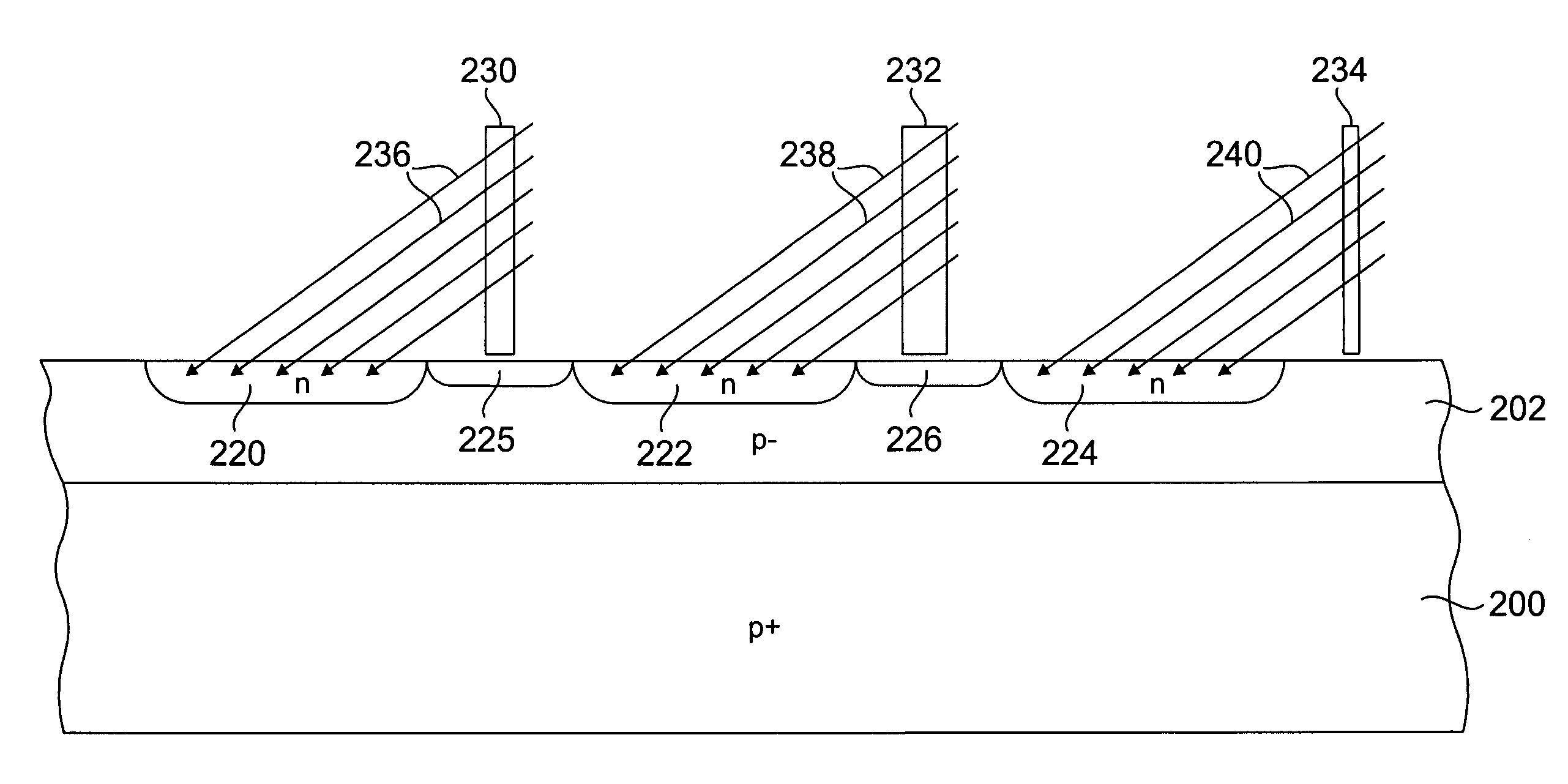Method of ion implantation for achieving desired dopant concentration
a technology of ion implantation and dopant concentration, which is applied in the direction of transistors, basic electric elements, electrical equipment, etc., can solve the problems of reducing the operation speed of devices, and achieve the effect of reducing the cost and complexity of forming
- Summary
- Abstract
- Description
- Claims
- Application Information
AI Technical Summary
Benefits of technology
Problems solved by technology
Method used
Image
Examples
Embodiment Construction
[0037]FIG. 7 is a partial schematic of a prior art CMOS integrated circuit 168 illustrating two pairs of CMOS devices. PMOSFET 170 and NMOSFET 172 form a first CMOS pair; PMOSFET 174 and NMOSFET 176 form a second CMOS pair. Vin1 is the gate driving signal for the PMOSFET 170 and the NMOSFET 172, which creates an output signal (Vout1) at the common drain connection. Vin2 is the gate signal for the CMOS pair PMOSFET 174 and NMOSFET 176, which produces an output signal Vout2. Note further that PMOSFET 170 is responsive to a drain voltage Vdd, and PMOSFET 174 is responsive to a drain voltage Vdd2. The drain voltages Vdd1 and Vdd2 may be produced off-chip or on-chip, although they are illustrated in FIG. 7 as originating from an off-chip voltage source. Because in one embodiment Vdd1 and Vdd2 are not equal, Vout1 is not equal to Vout2. In a typical circuit configuration, both output signals Vout1 and Vout2 drive the next active element in a cascaded circuit chain. For instance, Vout 1 ca...
PUM
 Login to View More
Login to View More Abstract
Description
Claims
Application Information
 Login to View More
Login to View More - R&D
- Intellectual Property
- Life Sciences
- Materials
- Tech Scout
- Unparalleled Data Quality
- Higher Quality Content
- 60% Fewer Hallucinations
Browse by: Latest US Patents, China's latest patents, Technical Efficacy Thesaurus, Application Domain, Technology Topic, Popular Technical Reports.
© 2025 PatSnap. All rights reserved.Legal|Privacy policy|Modern Slavery Act Transparency Statement|Sitemap|About US| Contact US: help@patsnap.com



